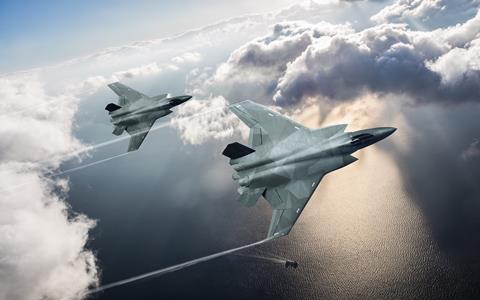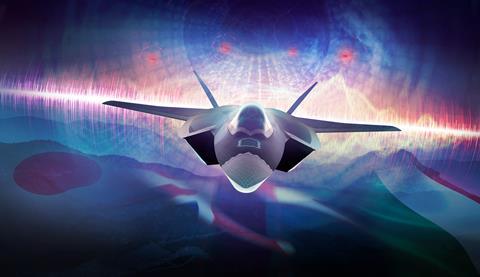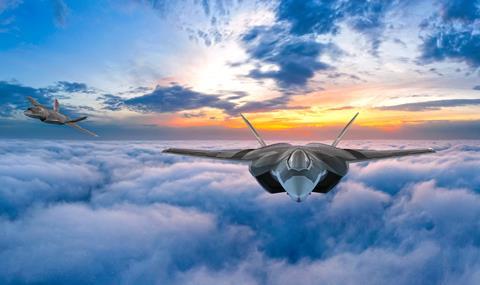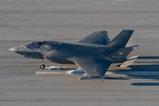Nine months into their Global Combat Air Programme (GCAP) venture, defence ministry and industry leaders from partners Italy, Japan and the UK say they remain in close formation as formal requirements and workshare arrangements continue to take shape.
Speaking together for the first time in public during a panel discussion at the DSEI show in London on 13 September, officials from each of the participating countries hailed the new construct which is being adopted for the development of a sixth-generation fighter to be available for operational use from 2035.

“They are three nations with genuinely shared interests,” says Richard Berthon, director future combat air at the UK Ministry of Defence.
The UK revealed its Tempest fighter project in 2018, formally unveiling a full-scale concept model at the Farnborough air show as a national-only activity. Its development was at the time a collaboration between BAE Systems, Rolls-Royce, and the UK arms of Leonardo and MBDA. But in December 2022 the project evolved into GCAP, via a trinational agreement between London, Rome and Tokyo.
STRENGTHENED PACT
On 12 September, the nations’ respective airframers – BAE, Leonardo SpA and Mitsubishi Heavy Industries (MHI) – strengthened their pact, pledging to “set out long-term working arrangements and maturity of the concept and capability requirements for the next-generation combat aircraft”.
Takamasa Iba, director, aircraft division at the Japanese defence ministry’s Acquisition, Technology & Logistics Agency, points to the changing global security situation as underscoring Tokyo’s need for an advanced fighter.
“Air dominance is the basis for our security, and we need this [capability] by 2035,” he says, noting that Japan faces a ballistic missile threat – North Korean test launches have repeatedly crossed its territory – and must respond to hundreds of airspace incursions annually.
In addition to its future operational contribution, he notes that involvement in GCAP will “nurture the next generation of engineers” in Japan, and “grow our industry standards”.

These priorities also exist in Italy, says Brigadier General Luca De Martinis, from its National Armaments Directorate.
“We believe this [development] is the best response to our operational need, and it is an opportunity to get the technologies and know-how we need for the future,” he says.
One of the central requirements for a future fighter is for every operator to have assured freedom of action and freedom of modification, enabling them to guarantee meeting their operational needs.
“It is a challenge, but also a key to success,” Iba says of this programme aspect.
While progress has been smooth to date, the coming months represent a potentially more challenging period, as the nations and their industry champions must agree on the programme’s organisational set-up, decision-making processes and workshare aspects.
“We need a different mindset and a different way of working,” says Guglielmo Maviglia, Global Combat Air Programme officer at Leonardo, who describes the effort as “an equal and balanced partnership”.
Hitoshi Shiraishi, general manager, integrated defense & space systems at MHI, notes that his company has a wealth of experience in working with US partners in the combat air sector, but that this is its first time collaborating with European industry.
PEDIGREE CHUMS
While noting that there are language and cultural differences between the parties, he notes: “All three companies [BAE, Leonardo and MHI] have developed fighter jets, and there is a common language in fighter development.”
Rather than hindering GCAP, he says differences “will inspire each other and deliver a better outcome”.
Herman Claesen, BAE’s managing director Future Combat Air Systems, notes that the GCAP organisational structure already includes a joint project management team.
Berthon says that unlike earlier programmes involving the UK, such as the four-nation Eurofighter Typhoon, where workshare was allocated using a strict juste retour model, “a lot of the [GCAP] work will be done jointly, rather than individually”. A rigid one-third-each allocation for the new programme “doesn’t work”, he adds.

Design and production will be enabled by the use of digital technology and model-based engineering, allowing joint teams to undertake packages of work across continents and different time zones.
“The digital element opens a new opportunity,” Claesen says. “We can look at the best engineers to do this via a digital environment, rather than fixing it in one location.”
A trinational joint security council has been established to ensure cybersecurity standards as the programme moves from a concept phase into detailed design and production.
In addition to matching their own operational requirements, the GCAP partners are also working from the outset to ensure that their future fighter can attract significant business from the export market.
GLOBAL MARKET
“The governments have stressed that exportability is absolutely at the core of the programme,” Berthon says. “I’m confident we are making really good progress – we genuinely see a market that is global.
“Countries want to partner – they don’t just want to be customers,” he says of GCAP’s export potential. However, he notes: “making sure it’s a successful programme [for the partner nations] is our top priority”.
While Japan’s constitution currently does not enable defence exports from the country, Iba notes that its two ruling parties have been discussing a potential future change to this stance. “We are confident that we can make this a success,” he says.
The UK has held separate combat air-related discussions with Saudi Arabia, with Berthon noting that the nations have a decades-long relationship in the sector, alluding to products including the English Electric Lightning, Panavia Tornado and Eurofighter Typhoon. However, such discussions are entirely separate to the GCAP effort, he says.
With the programme’s partners now in talks to establish its formal organisational structure and working arrangements, each will need to balance domestic needs against the success of the wider venture. This will provide the sternest test yet for the highly ambitious programme, which is seeking to develop and field an advanced fighter in half the time of previous collaborative types.
Europe’s other sixth-generation fighter activity – a partnership between France, Germany and Spain – encountered a one-year delay to its current phase starting, due to wrangling between industrial giants Dassault Aviation and Airbus Defence & Space. Those involved in GCAP must ensure that they do not cause a similar delay as they define their exact requirements and industrial expectations.
“I am confident that there is a common need, and requirements that are close enough,” Berthon says. “Across the three countries I see a really robust funding path.”
“There is a full commitment to support and sustain the programme,” says De Martinis, who notes that Rome has allocated funds in its defence budget planning in support of GCAP for the next 15 years. “We need to maintain the programme pace that we have now,” he adds.
“We are pretty sure we can reach a consensus,” De Martinis says of the organisation and workshare aspects. “We are trying to reach the same final result, and we will get there.”































